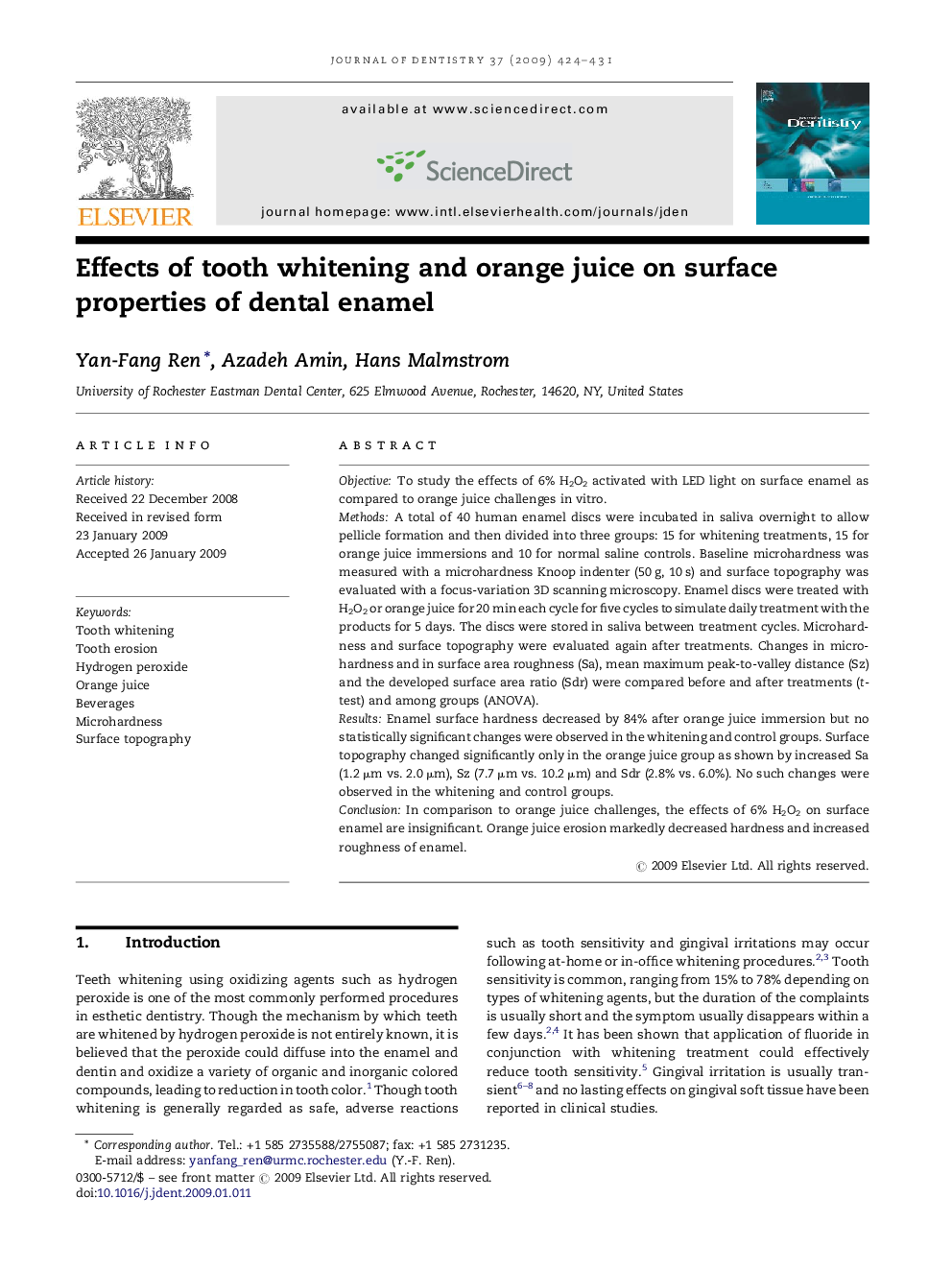| Article ID | Journal | Published Year | Pages | File Type |
|---|---|---|---|---|
| 3145351 | Journal of Dentistry | 2009 | 8 Pages |
ObjectiveTo study the effects of 6% H2O2 activated with LED light on surface enamel as compared to orange juice challenges in vitro.MethodsA total of 40 human enamel discs were incubated in saliva overnight to allow pellicle formation and then divided into three groups: 15 for whitening treatments, 15 for orange juice immersions and 10 for normal saline controls. Baseline microhardness was measured with a microhardness Knoop indenter (50 g, 10 s) and surface topography was evaluated with a focus-variation 3D scanning microscopy. Enamel discs were treated with H2O2 or orange juice for 20 min each cycle for five cycles to simulate daily treatment with the products for 5 days. The discs were stored in saliva between treatment cycles. Microhardness and surface topography were evaluated again after treatments. Changes in microhardness and in surface area roughness (Sa), mean maximum peak-to-valley distance (Sz) and the developed surface area ratio (Sdr) were compared before and after treatments (t-test) and among groups (ANOVA).ResultsEnamel surface hardness decreased by 84% after orange juice immersion but no statistically significant changes were observed in the whitening and control groups. Surface topography changed significantly only in the orange juice group as shown by increased Sa (1.2 μm vs. 2.0 μm), Sz (7.7 μm vs. 10.2 μm) and Sdr (2.8% vs. 6.0%). No such changes were observed in the whitening and control groups.ConclusionIn comparison to orange juice challenges, the effects of 6% H2O2 on surface enamel are insignificant. Orange juice erosion markedly decreased hardness and increased roughness of enamel.
